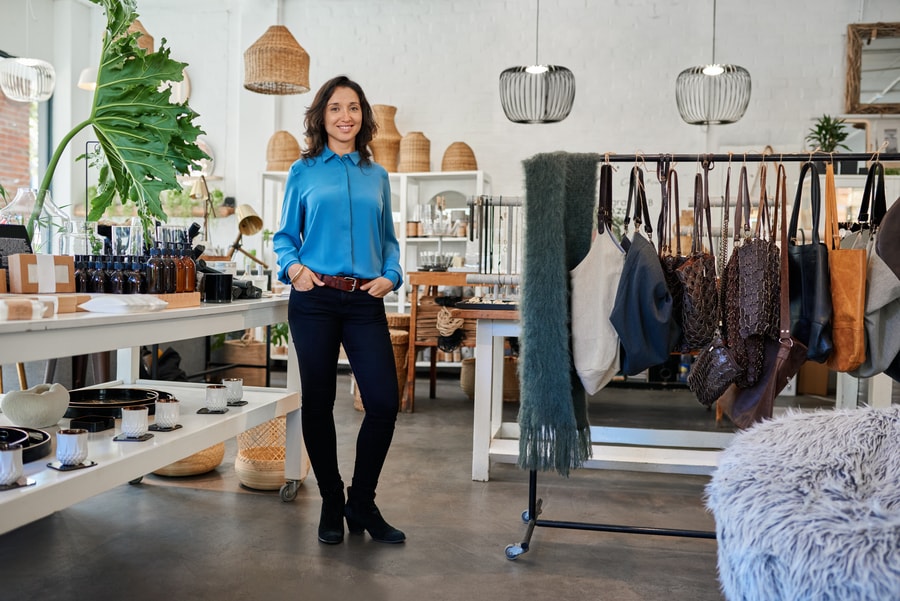
4 Trends in Retail Store Traffic
The effects of COVID-19 can be felt industry-wide.
Brick-and-mortar stores were already struggling prior to the pandemic. The virus has only sped up this shift. That being said, until online orders can be delivered instantly, there will always be a place for brick-and-mortar.
Physical store locations won’t go away. They just need to adapt to consumer needs in order to stay relevant and successful. To do that, they must first understand what those consumer needs are.
1. Overall in-store traffic has decreased, but is rising again
Because of the dangers of contracting the virus in a public setting, customers are switching to online shopping methods, which has led to an overall decrease in store traffic. Since some restrictions have lifted, in-store traffic has begun creeping back up, but it is still nowhere near where it was before the pandemic began.
Because of this, many retailers have had to adjust their inventory and labor needs. If retailers continue to purchase their stock at the same levels they were used to before the virus, they will be left with too much stock to be able to sell. Their labor needs are also far different than before.
At first, historical data wasn’t of much use. There was no possible way to tell what a store’s needs would be because everything was steeped in so much uncertainty. However, the industry has finally begun to understand how the virus affects in-store traffic more and more every day and can now use data from their POS to help them better forecast both inventory and labor needs.
As many industries are encountering shortages from suppliers, accurate and early inventory forecasting is even more critical. Make sure to monitor inventory and usage closely as time goes on, as the data will continue to be essential in understanding the effects of the virus on your store.
Download our ebook: How a Retail Point of Sale Increases Revenue
2. Consumer preferences have shifted
The virus has caused the economy to suffer. What started as a global health issue quickly transformed into an economic one that has shaken the way retailers and consumers conduct business transactions. Many customers are furloughed or laid off and aren’t as willing to spend. If they are, they are more careful than ever about how much they spend and what they spend it on.
It’s crucial, then, that you offer a lot of value for the price if you want customers to shop. Use this time to track your sales carefully so that you can identify which products are top sellers and what areas of inventory you can cut to reduce your overhead costs.
3. Transparency is more important than ever
While in the past, consumers used to flock to brick-and-mortar stores for entertainment and leisure activities, shopping has transformed. Now rather than a source of entertainment, shopping has become a necessity. Customers are only going out to stores when absolutely necessary, and are making less frequent trips, purchasing more items per trip than before.
Because of this, it’s critical that your inventory counts are accurate. Customers don’t want to venture out under the belief that you have a much-needed item in stock, only to find it missing from the shelves once they arrive.
By this point, every store owner should be investing in inventory software that delivers real-time inventory information and can automatically update what’s shown to be in stock on a retailer’s website. This level of transparency is important to customers, who don’t take kindly to retailers whose websites don’t accurately reflect current stock levels.
4. Safety is a priority
As stated previously, most customers are going to prioritize safety over entertainment, which means they will only shop at stores that reflect their own concerns and have implemented protocols and features that help keep customers safe.
Retailers are finding a number of ways to increase safety within their stores. Directional signage is one of the most popular ways. Stores are reorganizing the flow of traffic so that customers are directed to travel down aisles one-way, which reduces the opportunity for accidental face-to-face interaction and allows customers to stay a safe distance from one another.
Foot traffic patterns can help contain the spread of the virus, but can also be used to help you promote your products when you optimize your in-store layout. By directing foot traffic and strategically placing promotions, you make them much more visible to customers.
Some retailers are turning to shop-by-appointment methods. Others are limiting in-store capacity. Still, others are taking safety a step further by implementing self-service kiosks or tablet POS systems that allow customers to answer their own questions and manage their own transactions without the need to come into close contact with an employee.
It is an ongoing learning process
While many like to think that they have finally figured out how to handle the effects of COVID-19, the reality is that it is constantly changing and evolving. The industry is still being affected daily, and while certain measures can be taken to improve safety and boost in-store traffic, the state of the industry will continue to fluctuate until there is a vaccine available and the pandemic is under control.
Until then, the best way forward is by constantly monitoring the data available and continuing to adapt as necessary.
Touch Dynamic offers high-quality POS technology that is instrumental in helping your store overcome the negative effects that the pandemic has had on the industry as a whole. For more information on how we can help you succeed, contact one of our industry experts today.
